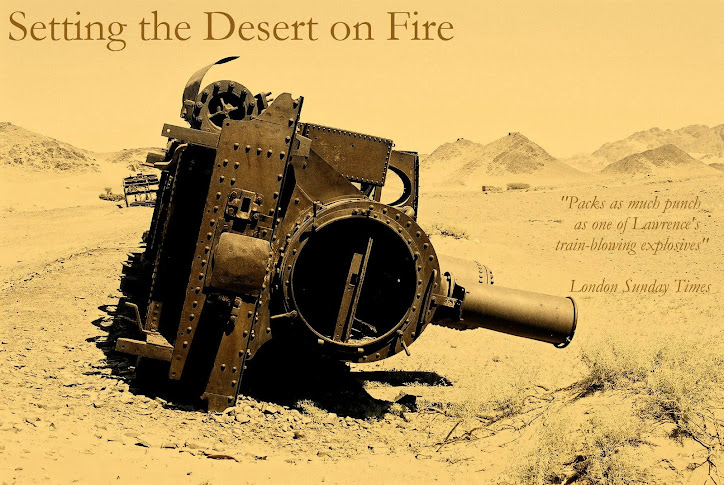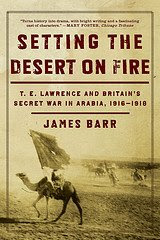A court has given permission for the body of Sir Mark Sykes to be exhumed, the BBC reports. Sykes died, in great pain, from influenza in Paris on 16 February 1919 and was buried in a lead-lined coffin at his family home at Sledmere in Yorkshire. Scientists hope that the virus that killed him might be preserved inside the coffin, and that samples of it may help them create drugs to fight a future flu outbreak.
Even before he died, Sykes was a controversial figure. “He was a worried, anxious man. That was the cause of his death,” suggested the then Prime Minister David Lloyd George. “He had no reserves of energy. He was responsible for the agreement which is causing us all the trouble with the French”.
The agreement was the Sykes-Picot agreement, which was negotiated by Sykes with Francois Georges-Picot over the winter of 1915-16. Britain initiated discussions to allay French suspicions about their policy in the Middle East. The agreement divided the near Middle East along a diagonal line, ‘from the “e” in Acre to the last “k” in Kirkuk,’ to quote the words Sykes used as he sliced his finger across the map. Simplified somewhat, France got rights to the area north of the line, Britain to the south.
Sykes had been an obvious choice to undertake the negotiations. Then a highly energetic Member of Parliament, he was known within the corridors of Whitehall as the ‘Mad Mullah’ where he had carved himself a job as an adviser on Middle Eastern policy to Britain’s leaders. Complicating his negotiation with Picot was the fact that the British had just made a vague promise to the Arabs of an empire after the war. Believing that the British would never have to honour any commitment to the Arabs, Sykes waved this earlier deal aside. He now privately admitted that his aim was ‘to get [the] Arabs to concede as much as possible to [the] French’. This was just as well, for Picot’s main negotiating tactic, according to another British observer, was ‘to give nothing and to claim everything’.
Sykes’s agreement came in for great criticism. Other British politicians and officials questioned the need to be so generous to the French, who had almost no forces in the region. Once the Americans had entered the war with their rhetoric of self-determination and President Wilson’s blistering attack on the “little groups of ambitious men who were accustomed to use their fellow men as pawns and tools”, the treaty – an old-fashioned imperial carve-up – looked increasingly anachronistic.
TE Lawrence’s discovery of the treaty's terms, in a meeting on the coast of Arabia with Sykes on 7 May 1917, spurred him to devise a strategy that was designed to wreck it. Lawrence believed that if the Arab tribesmen he was advising could cross the dividing line agreed by Sykes and Picot and reach the area of Syria promised to the French the treaty would be superseded by events, and worthless. And he succeeded: by the end of the war the Arabs had reached Damascus and Beirut, well inside the French zone.
As a consequence, and much against their instinct the French were forced to agree to a declaration that watered down the Sykes-Picot agreement. Sykes himself was by now worn out and deflated and under fire for an agreement which complicated the difficult situation in the Middle East. “Don’t take Mark at his own valuation”, whispered one colleague in London: “His shares are unsaleable here and he has been sent out (at his own request) to get him away.” Sykes had been sent to the Middle East to review the complex situation which he had helped to create. There he fell ill and it was probably this weakness that made him succumb to influenza at the peace conference.
In time Britain came to recognise the value of the Sykes-Picot agreement – if somewhat modified – to support its own developing imperial ambitions in the region. But local resentment of the treaty remains potent. ‘As I speak, our wounds have yet to heal … from the Sykes-Picot Agreement of 1916 between France and Britain, which brought about the dissection of the Islamic world into fragments’, said Osama bin Laden in 2003, suggesting a modern parallel with “a new Sykes-Picot agreement, the Bush-Blair axis, which has the same banner and objective.”
Sykes’s unquenchable enthusiasm and sense of humour are shared by his family, who have authorised the exhumation. Government permission is still needed. Were Sykes posthumously to contribute to a cure for influenza it would be a dramatic and significant postscript to his controversial career.
Wednesday, February 28, 2007
Might Sykes provide a flu cure?
Subscribe to:
Post Comments (Atom)



1 comment:
Buy Male Extra
Buy Penomet
Post a Comment